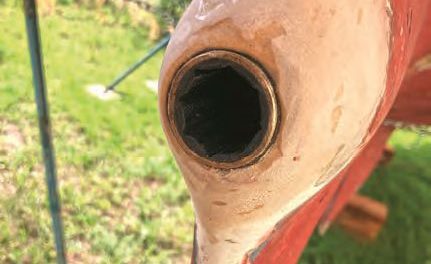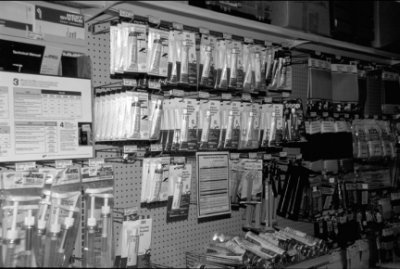
Your job requires a sealant. You don’t have to be a chemist to choose the right one.
In my experience, there are always two things trying to get into your boat that you don’t want there: water and your annoying brother-in-law. While there’s not much you can do about family problems, there is something you can do about the water.
The old saw describes a boat as a hole in the water, but the reality is that your boat is full of holes. Most of them were put there intentionally: to drain rainwater or to let water flush through, to cool a motor or to flush a head. But uncontrolled water is the stuff we worry about. It’s what rots our balsa-cored decks, drips on our bunks on a rainy night, or causes the boat to sink when we’re not paying attention. It can make us uncomfortable, cost us more money than we want to spend, or, ultimately, destroy that which we’ve worked so hard for and on.
Any time a hole is drilled, even partially, through a solid structure, it provides a place for water to enter. That hole is probably at least partially filled, either by a screw or a piece of hardware. The problem is that the two parts, shaped to their own purpose, have different shapes, and it’s rare for the two parts to match exactly. What is needed, whenever two or more solid objects are fastened together, is something that will keep even the smallest amount of water out, something to seal the two mating surfaces and dam the trickle before it becomes a flood . . . in other words, a sealant.
The idea is not new. Historical records show that early boatbuilders were confronted by the same problem. The rediscovered vessels of Native Americans and Vikings show evidence that thickened organic materials were used in the construction and repair of their hulls. This was usually a pitch- or tar-based material, derived from the same sources as their other building materials. They first used sap from trees, boiled to thicken it, and later used steeped and rendered animal by-products, such as cartilage and horn.
Eventual decay
“Stockholm tar” is still fondly remembered mostly for its pleasant aroma. This was used to waterproof hulls and rigging back in the days of wooden ships and iron men. These old products worked reasonably well and (within the technology of the day) demanded no more maintenance than did the rest of the vessel. But because they were organic, they would eventually dry out or decay. The basic families of these mastics are still available, even today, under the generic title of “bedding compounds,” though their chemistry has become a little more refined over the years.
But boats and society became more plastic, and boaters demanded more use for less maintenance. Other industries, in particular the aerospace industry, were developing materials to seal panels that made up flight surfaces and withstand the rigors of flight and space travel. As the performance level of boats increased, as speeds grew larger from more efficient engines and lighter but stronger materials, the stresses and vibrations grew correspondingly. Naval architects, who had looked to the aerospace industry for new building materials such as glass-reinforced plastics and acrylics, also looked there for materials to seal them.
Today, we have available a whole range of sealants and, though they are designed to do much the same job, each has its own purpose. Some are quick-curing, for convenience and to aid in the economics of construction. Others have high bond strength, both to the part to which they’re applied and internally, so the adhesion won’t break along the glue line. Over the last several years, the distinction between sealants and adhesives has become blurred, as greater experience with the chemical combinations bridge the gulf between the historical tradeoffs of quick cure and strong bond.

Three families
Today, there are three basic families of chemicals used in marine sealants: silicones, polysulfides, and polyurethanes. Recent advances in epoxy technology are starting to increase their utility in boat construction, however. (See sidebar on Page 15.) All of them are desig ned to adhere to a surface, cure, and remain flexible. By doing so, they accomplish three things: they form a water- and air-tight seal between two or more surfaces; they help join the surfaces together, often with the aid of mechanical fasteners; and they isolate the surfaces, to help prevent the passage of noise or electricity.
Silicone
Silicone is perhaps the most basic of the three. It is created from combining silica, one of the most useful of the industrial chemicals we have and one of the most common building blocks of Planet Earth, with a variety of other organic compounds. The stuff we squeeze out of a tube is chemically similar to the spray lubricants we use, and we also find it in paints, waxes, and other protective coatings and in electrical insulation. Common in household and automotive applications, it is among the first things we think of when we use the term “sealants.”
Polysulfides
As the name suggests, polysulfides are derivatives of the element sulfur, another common earth element. Early in this century, there was an explosion in the use of sulfur for industrial and medicinal applications as the particular properties of the element were explored. Heated nearly to the boiling point and then immersed in water, it forms a clear, sticky material that, when combined with other compounds, has high adhesive properties and is not particularly affected by long-term exposure to moisture. It’s easily identified by its strong aroma and good tooling properties.
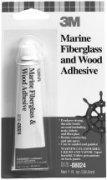
Polyurethanes
Like the other two sealants, polyurethanes are blends of other materials in a base, this time urea. Urea is a naturally occurring by-product of metabolism, though now mostly created synthetically. (When you read about slaves harvesting guano from remote, bird-populated islands a century ago, it was the urea content they were after.) It’s an acidic compound used in fertilizers, among other things, whose elements combine hydrogen, nitrogen, carbon, and oxygen into long molecular chains, longer than the molecules of silicones and polysulfides. These longer, more complex chains mesh within each other more intricately, and this gives them greater bonds within the sealant and to other materials. As a result, they have greater shear strength than the other two families and are less likely to break along a glue line.
Since the job is the same, why are there so many different types of sealants, and why should I use one and not the others when I’m working on my boat?
The simple answer is materials. What am I trying to keep from leaking, what is it exposed to, and what am I trying to bond to it? A modern boat is built of many materials, and the variety of coatings and other chemicals with which it may come into contact are just as varied. The specialized world of chemicals being what it is, not all of them work as well together as they might. Think of the different boats around you in your marina. They’re made of aluminum and mild steel, ferroconcrete, wood (both raw and resin-coated), carbon fiber and graphite, ABS and polyethylene plastics, and fiber-reinforced plastics – whose bonding agents can be polyester, vinylester, or epoxy products. And after the hull has been created, it can be finished in gels or paints in any range of chemical combinations, from lacquers and enamels to urethanes and polyurethanes.
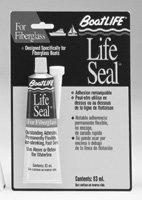
Diverse hardware
Hardware materials are just as diverse: aluminum, zinc, bronze, and stainless steels are some of the metals, and there are alloy choices in each of those. Some of the hardware can be plastic, either nylon or reinforced ethylene. Portlights can have tempered glass in them, or Lexan, or Plexiglas, and frames of ABS or metal with rubber or vinyl inserts for linings. Other chemicals are found on board: fuels and oils, cleaning solvents and waxes. The solvents and characteristics of each of the families of sealants have properties that make each one better suited to a particular kind of work.
Silicones, for instance, are very flexible. They will “give” in response to slight shocks and vibrations without tearing or separating from the substrate, and they tend to be chemically impervious. Fuels and oils won’t break them down as fast. They are chemically compatible with most plastics and are very good at creating a dividing line between electrically dissimilar pieces. The cure rate is fairly rapid, too, and in most cases the material will be tack-free in a couple of hours.
The down side is that, though they are elastic, most silicones don’t have much bond strength, particularly to fiberglass, and won’t do much more than hold themselves together. The prudent boatbuilder won’t use them for much more than a gasket material and will depend on mechanical fasteners for strength in part assembly. You can’t sand or paint them; in fact they can contaminate a surface that might be painted or glassed, and their bond to raw wood is not very good. When they are applied in areas of high heat, they can over-cure and become brittle, causing them to fail sooner. Purer forms of silicone can allow mold to grow, and this can contribute to rot in wood (as well as a decline in aesthetic appeal) although most used in marine applications have a mildicide mixed in. A marine-grade silicone also differs from household-use silicone in that it has inhibitors to protect against ultraviolet light degradation and tends to retain its flexibility much longer in the marine environment.
Twenty-year joint
The polysulfides, such as BoatLIFE’s Life Calk or 3M’s 101, bond to wood better than silicone does and also bond fairly well to metals and fiberglass. However, they can melt some plastics and acrylics, such as Lexan, and some vinyls can become softened by exposure to their solvents. Because of the metallic nature of sulfur, they are not particularly suited to electrical insulation and should not be used between two items of dissimilar metals.
Polysulfides are not as elastic as silicones and shouldn’t be used where constant vibration will occur while the part is under stress or expected to flex too much. They can be affected by common shipboard chemicals, though degradation doesn’t happen immediately to fully cured products. Cure times are more dependent on temperature and humidity and generally can take one to three days to cure completely, but you can sand them, and they won’t contaminate a surface to be painted. In fact, they will retain paint once the solvents have evaporated. With luck, a polysulfide joint can last 20 years or more, and there are many good old boats out there keeping their integrity because of polysulfide sealants.
Polyurethanes, though they’ve been around for a while now, are the most recent development of the three and were created to seal and join laminated panels in the aerospace industry. As a result, they bring extreme adhesion to sealants and bond well to most modern boatbuilding materials. They are best exemplified by 3M’s well-known 5200, or Sikaflex 292. (There is a story, apocryphal in the industry, about a 35-foot sailboat hull being loaded by a crane onto a trailer. After the hull had been lifted into the air and settled on the truck, someone noticed that the keelbolts had not been fastened and that the only thing holding the lead ballast keel to the hull was the 5200 applied as sealant.) The advice usually given about polyurethanes is: if you think you might ever want to take the pieces apart again, use something else.

Weaker polyurethane
Chemical companies have, however, been modifying this characteristic. For example, 3M has created a new product known as 4200, which has nearly the same strength characteristics as 5200 but lacks the same internal shear strength, so two joined parts can be separated without the usual amount of cutting, wedging, and swearing. Cure times for polyurethanes are relatively slow (they cure completely in five to seven days and are tack-free in 48 hours), which can be a boon if you’re not quite sure about the fit of two parts. As with polysulfides, though, curing times can be speeded up by misting water on the exposed glue line.
There are other products that blur the distinctions between the families of sealants and their properties, and they create even more havoc when you’re trying to decipher the right product for the job. BoatLIFE introduced its Life Seal several years ago. It is a blend of silicone and polyurethane formulated specifically for use with fiberglass. It looks and handles like silicone and comes in clear as well as the white and black of the silicone family, but it has greater bond strength even when applied to wood and fiberglass. It can be cut apart more readily than the polyurethanes, and it cures faster than they do, too. It’s still not sandable or paintable, or ultimately as flexible as silicones, but it is more so than the others and doesn’t have the strong odor of the polysulfides. BoatLIFE says it’ll bond well to glass, a difficult substrate to seal, and they recommend it for use either above or below the waterline.
In addition to the 4200 and 5200 products, 3M also makes a 5200 with quicker cure times. Called Fast-Cure 5200, it has most of the strength of regular 5200, but the cure time is significantly reduced: to tack-free in 1 hour and fully cured in 24 hours – a real plus for manufacturers and others working on small areas with lots of bedding. Like 5200, it can be cleaned up with mineral spirits, though petroleum products won’t affect it once it’s fully cured. At this writing, it comes in any color you want, as long as it’s white, though the rumor mill suggests that black may on be the way.
Epoxy breakthrough
The Pettit Paint Company recently came out with a new epoxy-based product that is redefining the use of that material in boat repair. Called Flexbond Marine Epoxy, it (unlike other epoxy materials on the market) retains a high elasticity component of about 40 percent of volume. It bonds to fiberglass, wood, steel, and aluminum, above or below the waterline, and after curing can be drilled and tapped, sawn, planed, filed, screwed, or nailed without fracturing.
When it’s applied to overhead or vertical surfaces, it will not sag or run. It cures under water. It doesn’t shrink or crack due to overheating while curing, and it can be pre-tinted with all types of alkyd, polyurethane-, or epoxy-based paints or tints without losing significant strength.
These attributes make it a fine repair product, much like any other epoxy product on the market. What sets it apart is its flexibility. Epoxies bond like there is no tomorrow to most other common substrates, except for some plastics and glass. However, they are brittle and the more of the proprietary fillers you use in the mix or the thicker you apply them, the more brittle they become. Flexbond works the other way. You use it as it comes out of the two-part tubes, without the need to mix anything else into the matrix. You still get the bond you need, but it is much better at flexing with the substrate as the part moves with use.
This makes it a possible sealant in places where the greatest strength in a bond line is necessary. The flexible joint that sometimes develops between a ballast keel and the hull of a sailboat comes to mind, a joint at which no other material seems to hold. Certain repairs on wooden hulls could benefit, particularly with Flexbond’s ability to hold a fastener. And it might be good for a quick-and-dirty repair patch.
It’s too expensive to use just anywhere, and with a bond strength even greater than that of the polyurethanes, you probably would want to think about exactly how the part so joined was going to be used. However, it seems to be a breakthrough in materials technology, one which I think is going to spur a whole development of similar products and one which will really expand our bag of boat repair tricks.
Sandable sealant
BoatLIFE also makes what the company calls a sandable sealant. They market it as a product with which to pay the seams in teak decks. While polysulfides have been the usual treatment for leaky deck seams, this silicone-based product is a classic example of changes in sealant chemistry blurring the lines of distinction between product lines. The main selling point is that, unlike polysulfides, it fully cures in 24 hours and is tack-free and sandable within 30 minutes, a real consideration on a project that is literally underfoot. They say it has good-to-excellent bonding to most materials and recommend it for sealing everything, in fact, except for wooden seams under water. Like the other silicones, it is not paintable. It comes in the standard deck-seam colors of black and white.
Deck seam sealants are obviously a large market, because 3M has also developed a new product called Marine Teak and Wood Seam Sealant. A one-part polyurethane, it’s an offshoot from the 4200 product. It differs from BoatLIFE’s seam compound in that it takes a little longer to cure, though not as long as the polysulfides. But, if need be, it can be painted other than its normal black color by using lacquers. It might last a little longer than the silicone but might be harder to remove later.
|
Caulk and Sealant Recommendations
|
|||||||||
|
Before selecting any caulks or sealants, refer to this chart and choose the type that best suits your application.
|
|||||||||
|
E – Excellent G – Good S – Satisfactory X – Not Recommended
|
|||||||||
|
Polyurethane
|
Polysulfide
|
Silicone
|
|||||||
|
Wood to Fiberglass (Wood Trim)
|
G
|
E
|
S
|
||||||
|
Wood to Wood (Wood Trim)
|
E
|
E
|
S
|
||||||
|
Deck Seams ( Teaks and Other Woods)
|
X
|
E
|
X
|
||||||
|
Underwater Wooden Boat Hull Seams
|
S
|
E
|
X
|
||||||
|
Deck to Hull Joints
|
E
|
E
|
G
|
||||||
|
Through Hull Fittings – Fiberglass
|
E
|
E
|
G
|
||||||
|
Through Hull Fittings – Wooden
|
E
|
E
|
S
|
||||||
|
ABS & Lexan Plastics to Fiberglass
|
X
|
X
|
S
|
||||||
|
ABS & Lexan Plastics to Wood
|
X
|
X
|
S
|
||||||
|
Plastic Hardware to Fiberglass
|
X
|
X
|
G
|
||||||
|
Plastic Hardware to Wood
|
X
|
X
|
S
|
||||||
|
Metal to Wood (Deck & Hull Hardware)
|
G
|
E
|
S
|
||||||
|
Metal to Fiberglass (Deck & Hull Hardware)
|
G
|
E
|
G
|
||||||
|
Glass to Metal (Windshields)
|
G
|
E
|
E
|
||||||
|
Glass to Fiberglass
|
G
|
E
|
G
|
||||||
|
Glass to Wood
|
G
|
E
|
S
|
||||||
|
Glass to Vinyl
|
S
|
X
|
E
|
||||||
|
Electrical Insulation
|
S
|
G
|
E
|
||||||
|
Rub Rails to Fiberglass
|
E
|
G
|
S
|
||||||
|
Rub Rails to Wood
|
E
|
E
|
S
|
||||||
|
Sandability
|
S
|
E
|
X
|
||||||
|
Paintability
|
E
|
E
|
X
|
||||||
|
Chemical Resistance
|
S
|
E
|
S
|
||||||
|
Gluing/Adhesion
|
E
|
G
|
S
|
||||||
|
Cure Rate
|
Medium
|
Medium
|
Fast
|
||||||
|
Approximate Shelf Life (Years)
|
1
|
1 1/2
|
2
|
||||||
|
Life Expectancy (Years)
|
10
|
20
|
20
|
||||||

What’s right for your job
What to use? It depends on what you’re going to do with it. Are you asking it to hold back water and create a custom gasket, or do you want it to glue two parts together? Are you doing deck seams or mounting a through-hull fitting. A deck fill? An exhaust tip? How long can you leave it to cure before the dog walks through it or you have to set sail and thrash it through the ocean? And, like that ballast keel, is there a possibility that you might someday need it to really hold?
Nine times out of 10, I find one of the general bedding products, like Life Seal or 4200, works best. I mostly bed hardware to the hull or deck and, having renovated a couple of boats, I’m very mindful of the fact that nothing lasts forever. Some day somebody’s going to have to do maintenance on the thing, and that next guy who has to tear it apart might just be me. As a result, I don’t often have any use for something with the near-permanence of 5200 or 292. Nor do I do much work on classic wooden hulls, so when I buy Life Calk and 3M’s 101, I get it in the smallest tubes I can find.
I think that the most difficult decision would be what to use on those deck seams, particularly since the two new alternatives seem to be such good products. In general polysulfides in either one- or two-part mixtures, were the best of the available choices, because until BoatLIFE’s development, silicones weren’t recommended for wood, and the polyurethanes just took too long (and the mess you could create with them was all but permanent).
The two-parts have been recommended over the one-parts, as they cure faster and fill voids better, though they can be a little “goopier” to work with. You are somewhat limited by choice, as not all are available in both colors; but all are advertised as having similar imperviousness to chemicals and similar lifespans. One-part polysulfides, the silicones, and 3M’s product all cost roughly the same, and the two-part polysulfide is the most expensive of the lot. Perhaps the best idea would be to find someone with experience in all of them, pick his brain and make your decision based on your own situation.
Sealant selection
We asked several manufacturers why polysulfides are recommended for “fiberglass” hulls and decks but not for some other plastics.
Two things can cause a manufacturer to not recommend a sealant for use on a particular material: poor adhesion and chemical attack. Manufacturers were much more concerned with poor adhesion than chemical attack. They said they preferred to test and recommend on a case-by-case basis. Naturally, selection charts are going to deal in general cases. So follow the general selection chart, but double-check the container and the manufacturer’s selection chart as well.
Some silicones are not intended for use below the waterline. Such misapplication has caused boats to sink.
Apply it properly
The biggest complaint about any sealing job is, “I put two ounces of stuff there, so how come it still leaks?” Invariably, when the autopsy is performed and the part is removed, the sealant that is there is microscopically thin and has failed because there wasn’t enough of it to fill the space.
What happens is that the part installer becomes too gung-ho and tries to do too much in one day. He’s applied the goop, installed the part, cranked down hard on the fastenings, wiped off all the stuff that leaked out around the edges, and gone on to the next piece. Well, all that sealant is now on the rag, which will eventually end up in the dumpster, not between the part and the hull where it will do him some good.
Remember, that part is intended to be fastened to the hull for a good long time and the space of a couple of hours isn’t going to be much in the life span of the hull. Goop the part in a place where it will have good contact with the substrate, install it lightly, and let it sit a few hours for the sealant to cure. When you come back and tighten the screws, there will be a nice, solid gasket under the part that will compress and keep the water out. Keep the goop where it belongs, under the part or in the tube. Boats are already too expensive to be throwing away supplies because of misapplication.
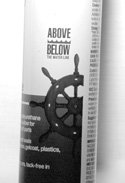
Clean and prime
With any of the products, remember: nothing is going to help them stick to fresh-sawn, oily woods better than first cleaning the wood with products such as BoatLIFE’s Life Calk Solvent and Cleaner and priming with their Life Calk Primer or Sika’s 203 Primer. It’s false economy to try to do the job and skip a step – it would be a shame to have to re-clean and re-pay all those seams, either deck or hull, just to save the cost of the primer. The old rule of thumb, When in doubt, prime it out, works just as well for sealants as it does for paint.
For years, the biggest problem with all sealants has been the economy of the packaging of the stuff. Fortunately, manufacturers have become aware of the fact that, while a 10-ounce tube worked well for big jobs and boatbuilders, most of the rest of us waste more than we use by having the stuff harden in the tubes between uses. They’ve started selling most of their products in one- and three-ounce toothpaste tubes that fit well in a toolbox and contain just the right amount for the small jobs. They are also a lot easier to handle in tight corners than caulking guns.
In the end, follow the manufacturers’ recommendations, be mindful of the materials involved and the amount of bond strength you need, and don’t be afraid to be liberal with the goop. More of it means less water in places where you don’t want it.
For further information, contact:
BoatLIFE Industries 843-566-1225 3M Marine 877-366-2746 Pettit Paint Company 800-221-4466
Article from Good Old Boat magazine, March/April 2000.




